I was taking my regular stroll through the Botanic Gardens with when I heard a familiar call. A rapid-fire, high-pitched ‘yewik yewik, yewik yewik’. I had heard this call before, but usually in dense forest habitat on the urban fringe. A flash of white feathers ghosted through the treetops. I whipped out the binoculars for a better look. My suspicions were confirmed when I sighted what is possibly the most spectacular of Accipiter hawks in the world, a Grey Goshawk (Accipiter novaehollandiae).
I could see a bird through the treetops, high in an Earpod (Enterolobium cyclocarpum) tree. Grey Goshawks can be tricky to spot due to their tendency to roost right at the top of the canopy. This is despite their distinctive white-grey plumage that contrasts strongly with typical tree foliage. On this occasion I could see the sun strongly reflecting off the light grey chest of a male adult. Interestingly it was holding a stick in its beak. I then observed a much larger, powerful-looking bird hop onto an adjacent branch. It was a female adult, and it seemed that courtship was underway. Could nest-building be about to commence?
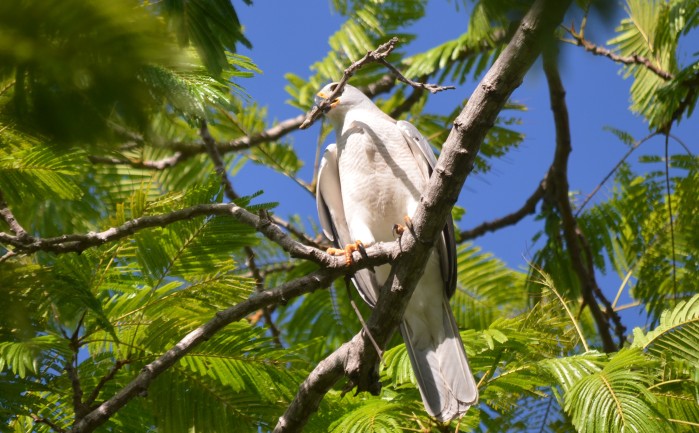
I can’t claim to possess comprehensive knowledge of the intricacies of Accipiter courtship. I have observed this stick-holding behaviour in Brown Goshawks (Accipiter fasciatus) before, when a male holding a stick in its beak would face towards a nearby female. A basic hypothesis for this behaviour would be that the male is indicating to the female its willingness to nest together. A few weeks later I got confirmation that the pair were planning to stay a while. The base of a nest had been developed in the forking branches of an Earpod tree.
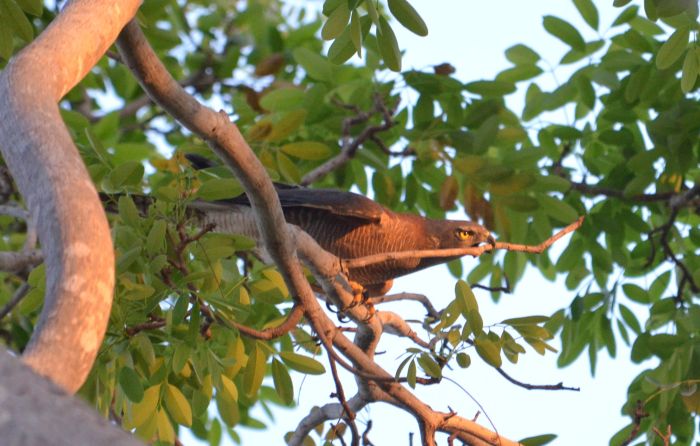
Over the following months I frequently heard Grey Goshawks calling in the afternoon from my balcony. The source of these calls became somewhat confusing when the local Spangled Drongos (Dicrurus bracteatus) took to mimicking the Grey Goshawks. Visits to the nest area brought frequent sightings, usually of the male, but rarely did I see a pair together. Momentum seemed to have stalled. Perhaps the Botanic Gardens was too busy a location for this skittish bird, with public events such as concerts and weddings occurring regularly nearby?
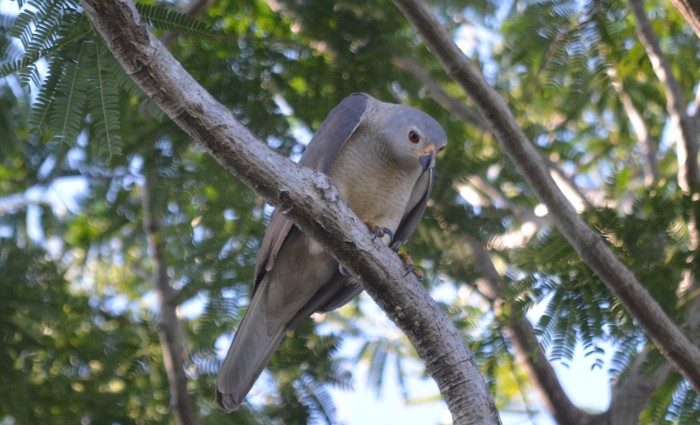
My optimism for Grey Goshawk breeding escalated exponentially when I observed the pair copulating (mating) near the nest. A loud, high-pitched constant calling alerted me to the presence of an adult that had to be checked out. I was pleased to see a female bird. It’s the job of the male to undertake most of the nest building and stake out a territory, so his presence was taken as a given. Less certain is whether a female is suitably impressed to take up the offer. I heard a call from a tree adjacent to where the female was roosting, confirming the males’ presence. The female then took up a submissive pose, drooping her wings and lowering her head. The male took the signal and flew in gracelessly to mount the female. A few seconds of wing-flapping and high-pitched screeching ensued as copulation occurred. The female held her submissive pose for a few seconds after the male dismounted. The male then proceeded to catch a lizard from the tree and feed it to the female.
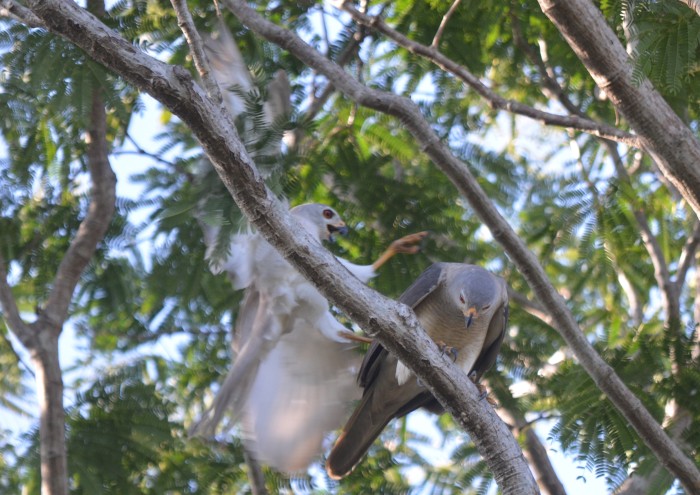
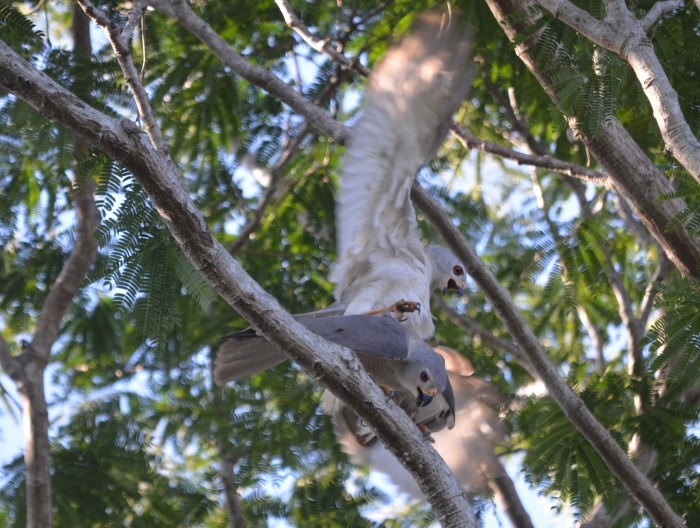
Copulation between this pair doesn’t necessarily mean that egg-laying is imminent, though it does bode well. Raptors undertake copulation on a frequent basis. Australian Peregrine Falcons (Falco peregrinus macropus) have been documented copulating up to 15 times per day, whilst 500-600 copulations per clutch have been recorded for the European Goshawk (Accipiter gentilis). This high rate of copulation is associated with the relatively large testes of male raptors, which is typical of birds that don’t guard their mates. At the very least copulation indicates that the social bond of the pair is strong. With a new nest built, and the male proving his prowess as a hunter, surely the female will soon embark on the next step in the breeding process and finally incubate the nest. Fingers crossed!
References
Olsen, P. 1995. Australian Birds of Prey. University of New South Wales Press, Sydney, NSW.
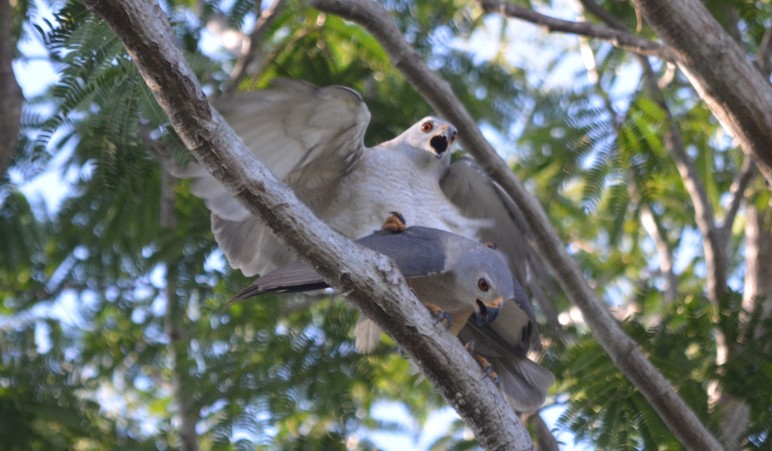
Fascinating! Did you end up seeing any babies? Is it still to soon to tell? Thanks for sharing this story and for the beautiful photos.
LikeLike
Thank you. At the moment the nest is being incubated and as far as I can tell there are no chicks yet. Fingers crossed! I suspect the eggs to hatch very soon and there will be a lot more activity near the nest.
LikeLike
We’ve just had a couple move into the mahogany near my place, they’re beautiful, unfortunately they really love to eat my native finch 😦
Peregrine Street Wulagi, in the biggest of the the mahogany trees in the park if you care to take a look.
LikeLiked by 1 person
Thanks for the info Brian. I did a quick check of your area and located a rather large nest that I suspect they are using, but alas there was no activity nearby. I’ll return one afternoon for another look, The Grey Goshawk call is very distinctive!
LikeLike
I saw them again yesterday flying around my house and calling out over my house. Beautiful song.
LikeLike